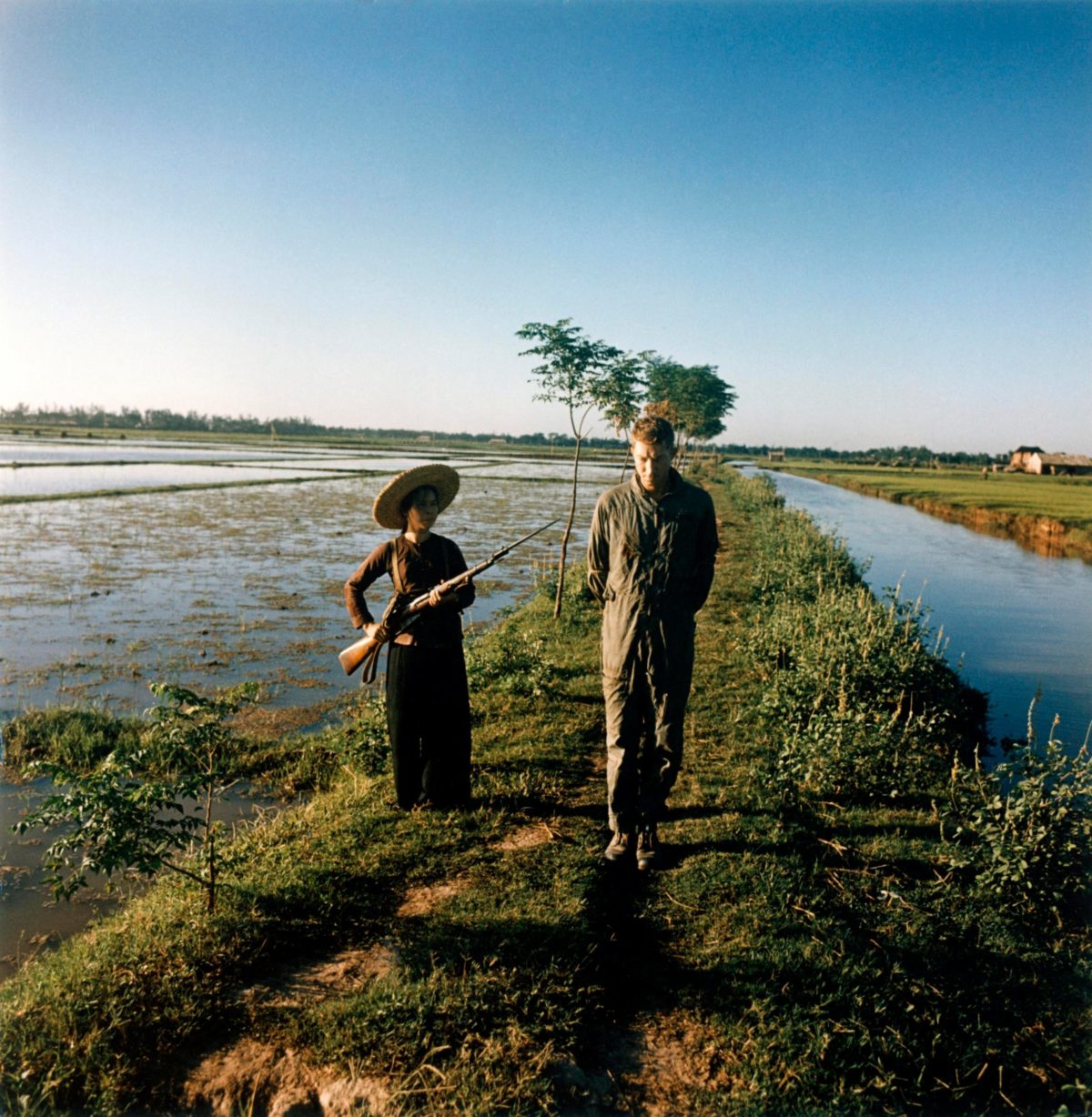“I walked across an open field. They told me to ‘keep my head down and don’t look around,’” Dewey Wayne Waddell said in an interview with the Veterans History Project, a part of the Library of Congress. “Which immediately tells you to be sure to look around.”
For the briefest of moments his eyes flash towards the camera. “I was looking for any way for my family to know I was alive,” Waddell later told TIME. “I was… hoping that if these pictures got out somebody would recognize me.”
His planned worked.
American airman Dewey Wayne Waddell, held prisoner in Vietnam, 1967. pic.twitter.com/FtvKwWl3K3
— History Photographed (@OldHistoryPics_) May 27, 2018
On July 5, 1967, Waddell was flying won a mission to bomb the northeast supply route to China near Hanoi when his Republic F-105 Thunderchief was struck by enemy anti-aircraft fire. It was Waddell’s 47th mission — or, as he calls it, his 46th-and-a-half bombing run.
He punched out of the fighter jet — and his parachute only partially opened. Miraculously, he suffered no injuries from the fall.
Once on the ground, the Georgia native recalled looking around at the rolling hills and thinking, “this looks familiar, almost like being at home.” Almost immediately after, however, Waddell mused, “I don’t think anyone here is going to be glad to see me.”
“They weren’t,” he added.
After landing “right in the ring of gunsights” Waddell’s hopes of evasion and rescue quickly dimmed.
Because of his crash Waddell correctly assumed that the Air Force would presume him KIA. Although officially designated MIA, there was little hope within the military that Waddell had survived the crash.
Swiftly imprisoned at the infamous Hanoi Hilton, Waddell went through an “interrogation and all the things they do to welcome you aboard out there,” he joked in his interview with the Veterans History Project.
“The first thing I learned as a POW was that I wasn’t as big and mean and tough as I thought I was, or that I thought a fighter pilot should be,” Waddell told a local newspaper The Citizens in 2016. “They expertly utilized ropes and nasty devices to coerce you to say things you didn’t want to say and normally wouldn’t say.”
On a Saturday a little more than 10 days later, Waddell’s captors told him that he was to confess to being a war criminal and that he was going somewhere “to be tested” that following Monday.
“I thought about it over the weekend, did some soul searching,” Waddell recalled in the history project interview. “Not specific decisions, but to establish for myself mentally how far I would go… establish a line that I would not cross even if it meant my life.”
That Monday, as his blindfold was taken off, Waddell found himself standing in a rice paddy. To his surprise, he saw two Caucasian males standing before him not with weapons, but with cameras.
He later learned that the two men were an East German film crew sent to film a documentary series about the war, Pilots in Pajamas.
“Guarded” by a diminutive militiawoman, the juxtaposition between Waddell and the woman was clearly meant to embarrass the American military and score a propaganda win for the communists.
Walking several times up and down the rice field, Waddell was instructed by his captors to keep his head down and remain silent. Yet at every opportunity the airman cast a furtive glance at the camera in hopes that the image would find its way into the hands of the West.
Broadcast on East German television nearly a year later, Pilots in Pajamas was picked up by U.S. military monitoring the satellite nation’s propaganda.
“Well, this thing that showed up turned out to be exactly what I’d hoped for,” Waddell told TIME. “When [the Air Force] saw that, they pulled off several stills and sent them to my family, who identified me of course. So that’s what changed my status from MIA to POW.”
Enduring nearly six years of captivity, Waddell was released on March 4, 1973 as part of Operation Homecoming.
His picture, however, would continue to bring him back to that snapshot in time.
Nearly 30 years after the airman was shot down, while at a cartoon and photography convention, a friend of Waddell’s happened to start chatting with the son of one of the German photographers, Thomas Billhardt. Through that same friend, the former POW and Billhardt met again — this time in Berlin.
“I just found it ironic that we could meet in war and then 30 years later,” Waddell, now retired and living in Marietta, Ga, recounted to the LOC, “through absolute happenstance, cross trails again.”





